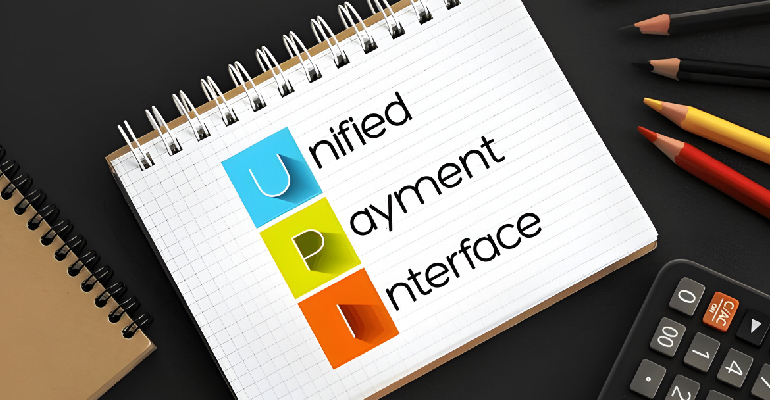
2024-8-27 14:33:9 Author: securityboulevard.com(查看原文) 阅读量:2 收藏
UPI has redefined digital transactions as hassle-free like none other in India. However, with the growing popularity of this method, security breaches have been on the rise. Protect your UPI transactions to make your digital experience secure. This blog will discuss important UPI security best practices to secure your finances and personal data.
UPI (Unified Payments Interface) can collect money from bank accounts, making it easy to transfer from one individual to another using a VPA or UPI ID. The other individual receives the total item without needing to provide related information, like the bank account number, and without needing to exchange contact details. Some of UPI’s most important security features are listed below: It provides escalated security using two-factor authentications:
- Encryption: UPI transactions are end-to-end encrypted, ensuring the data being transferred is secure.
- Real-time monitoring: Banks and UPI service providers monitor suspicious activity and flag probable fraud in real-time.
Even though they support built-in security features, users must adopt additional best practices to prevent cybercrimes.
Best Practices for UPI Security

Your UPI PIN is the key to your UPI transactions; protecting it is very important. Follow these tips for securing your UPI PIN:
Never share your UPI PIN: Fraudsters may call from the bank or UPI customer service and ask for a PIN. Banks or UPI applications never ask for such details.
Create a Strong PIN: Use a unique PIN—that doesn’t use predictable numbers, like your birth date or simple sequences (such as 1234). A good PIN will deter would-be guessers.
Regular PIN Updation: Frequent changes to your UPI PIN will not allow unauthorized access to your account.
2. Watch Out for Phishing Attacks
Phishing is really common, and cybercriminals use it to extract sensitive information from you. Here’s what you can do:
Avoid clicking on suspicious links: Phishing links are placed across to you by miscreants in payment requests, SMS, or email. Some may even pose as messages on your social media. These links might take you to fake UPI login pages designed to steal any information you put on them. aerial
Check payment requests: Always check the payment requests before approving any UPI payments. Sometimes, fraudsters create fake payment requests, misrepresenting themselves as original service providers.
Use of official apps: Download the UPI app from an official app store, or these UPI apps are available on Google Play or Apple App Store. Do not use any third-party links.
3. Use Multi-factor Authentication setup
Although UPI is set up with two-factor authentication, having an additional layer of security won’t hurt. Always set up multi-factor authentication using a mechanism like fingerprints, facial recognition, and your UPI PIN.
Biometrics: If your UPI app supports biometric authentication, enable the setting. This ensures that even if someone gets hold of your phone, they won’t be able to access your UPI app without your fingerprint or facial recognition.
4. Keep Your Mobile Secure
Your mobile device serves as the doorway into your UPI transactions. It can help block any unauthorized entry to your UPI app.
Keep a screen lock: Keep your phone locked with a strong password, PIN, pattern, or even biometric authentication.
Keep your phone up to date: Keep your phone’s operating system and apps updated with the latest security patches.
Malware: Never download applications from unknown sources since they can hack your data with malware.
5. Keep a Regular Check on Your Transaction History
Keeping a record of your transaction history through UPI will help you spot unauthorized transactions earlier. Report any suspected activity to your bank in case of detection.
Check the notifications: Keep a record of your bank’s SMS and email notifications regarding your UPI transactions.
Check your bank account: Check your bank account statements regularly and trace any discrepancies. Early detection of fraudulent transactions can minimize losses.
QR codes are a popular way to initiate UPI payments but can also be used by fraudsters. Scanning these codes can be risky, so always be careful:
Verify the source: A QR code should only be scanned from trusted sources. Fraudsters may create malicious QR codes; money gets initiated for unauthorized transactions after scanning.
Double-check payment amounts: When paying through QR codes, the amount to be paid must be verified mandatorily before pressing the confirm button for the transaction.
7. End Your Session by Logging Out
It can also be quite useful not to remain logged in to the UPI application after the completion of each transaction as additional precautions to be saved from unauthorized transactions if one’s phone is stolen or lost. Many apps have the auto-logoff feature, but logging out manually may add security.
8. StrongBox IT’s Cloud Security Testing for Mobile Banking Apps
Considering this, businesses should force-test UPI-integrated apps to avoid security vulnerabilities. StrongBox IT’s testing on cloud security fortifies mobile banking apps from assaults; the integrity of the UPI ecosystem should be preserved with regular vulnerability loads and penetration tests.
Conclusion
UPI is making digital payments easier and more accessible, but security threats continue to evolve. Adhere to these best practices; your UPI transactions will be secure, and you can have a safe digital experience. Stay cautious, safeguard your personal information, and frequently update your security arrangements to develop resilience from the newest cyber dangers.
While the above rests on the providers’ shoulders, its importance for the users remains in their own capacities as well. A few precautions can easily ensure that your UPI service helps you continue to leverage this convenience with perfect safety.
如有侵权请联系:admin#unsafe.sh
